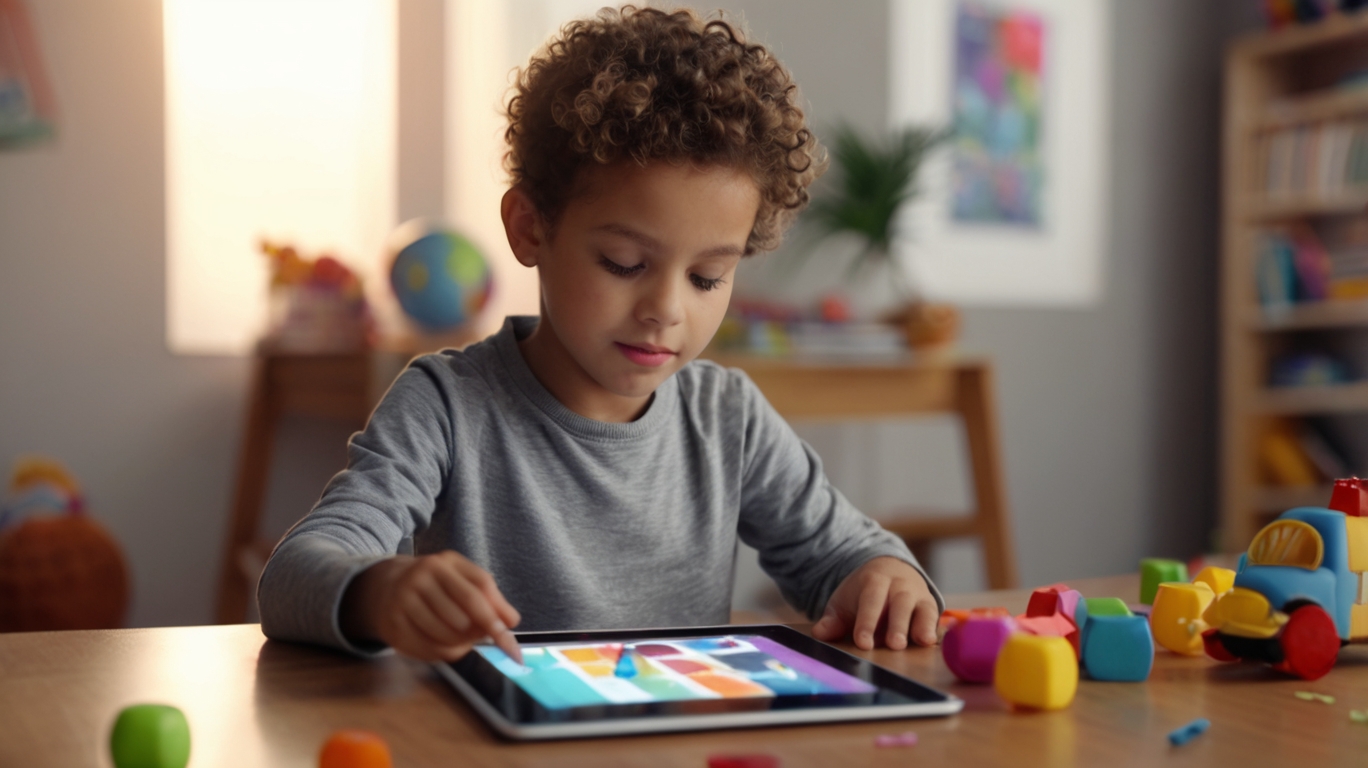Today’s parents are quietly carrying the pressure of navigating a childhood unlike any before, where screen time isn’t just a treat, but often the main classroom.
We know devices can teach, but what are they replacing?
School Was Over, but We Were Too Tired to Play
Just last week, I was helping my niece get through her online school day, specifically, a math lesson that should’ve taken 30 minutes. The Wi‑Fi kept lagging, she started zoning out, and I, without even realizing, drifted into checking my own notifications. By the time she wrapped up her last assignment, we were both drained. She was restless and wound up; I was mentally exhausted. And even though the clock said school was over, that precious after-school window, the time we could’ve spent outside, playing & connecting felt like it had vanished. The energy for it was just… gone.
Inside, I felt that familiar tug of doubt: Am I doing enough? Am I relying too much on screens?, but I also had to remind myself: I’m learning, too. We’re all figuring this out.
The Research Is Loud and Clear
It’s not just parental guilt. There’s solid science behind our instincts.
🔹 Too much screen time harms brain development. Children who exceed two hours of daily screen use tend to score lower on language and thinking tests. Heavy users show thinning in brain regions tied to critical thinking.
🔹 Screens affect emotions. A massive 2025 meta-analysis found clear links between screen time and anxiety, depression, and attention issues. Kids often turn to screens when they’re already struggling, creating a toxic loop (Psychological Bulletin, 2025).
🔹 Physical health takes a hit. From poor sleep and posture to rising childhood obesity, sedentary tech time crowds out what really matters: movement, sunlight, rest.
Why Play Deserves a Comeback
Unstructured, imaginative, physical, social play in all its forms is a powerhouse for growing brains and hearts.
Kids don’t just have fun when they play, they build emotional resilience, learn to take turns, invent, negotiate, and fail safely. Climbing a tree teaches courage. Hosting a tea party for stuffed animals sparks creativity. Tag on the playground builds coordination and reduces stress.
And something truly wild: studies show that kids who get regular play breaks perform better academically. Yes, more play, better grades.
The American Psychological Association calls play a “fundamental necessity” for childhood. Finland’s world-famous education system gets it: kids there have frequent outdoor breaks and start formal academics later, and still outperform globally.
We can’t afford to treat play as the leftover after homework. It is the homework.
So, How Do We Actually Find Balance?
Start small. Here are five flexible, real-life shifts you can try, no perfection required.
1. Set gentle screen-time boundaries.
Not all screen time is created equal. Prioritize educational content, interactive apps, and video calls with loved ones over mindless scrolling or endless games. Don’t forget: even good screen time needs limits. The American Academy of Pediatrics recommends no more than an hour per day for young kids.
2. Create tech-free moments.
Maybe it’s no devices at the dinner table. Or screens off by 8pm, Or one weekend morning dedicated to board games or bike rides. These rituals matter. They teach values, build presence, and model restraint.
3. Actively schedule in play.
Don’t just say “go play.” Make room for it, just like school or chores. Build in breaks between assignments. Go for a walk after lunch. Encourage after-school free time. Let them be bored, boredom is the birthplace of creativity.
4. Join the fun.
Play with them when you can. Not to direct, but to connect. Whether it’s building a pillow fort or kicking a ball around, your presence says, this matters. You’re building trust and modeling joyful curiosity.
5. Be the example.
Let your child see you reading a book, painting, walking outside, or just sitting quietly without a screen. Our actions speak louder than screen-limit lectures. When we put our phones down, we invite them to do the same.
It’s About Intention.
We don’t have to go off-grid or throw tablets in the sea. Courageous parenting in the digital age looks like this:
- Noticing when something’s off.
- Admitting it’s hard.
- Trying again, with honesty and love.
You’re not weak for needing help with this, you’re wise for asking the questions. Your child doesn’t need a perfect screen schedule, they need a parent who shows up with curiosity, flexibility, and compassion.
Finally,
Your child may learn online, but they grow through play. So let’s not make it either/or.
Let’s raise kids who can navigate digital tools and climb trees. Who can code an app and build a Lego spaceship from imagination. Who see screens as tools, not crutches.
Because balance is not in eliminating tech but making room again, for eye contact, dirt under fingernails, belly laughs, and the magic of unstructured wonder.
Let’s give our children that gift, let’s reclaim childhood, one playful moment at a time.





